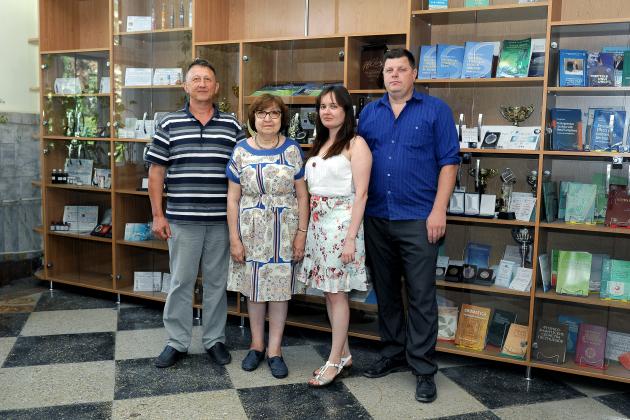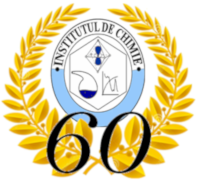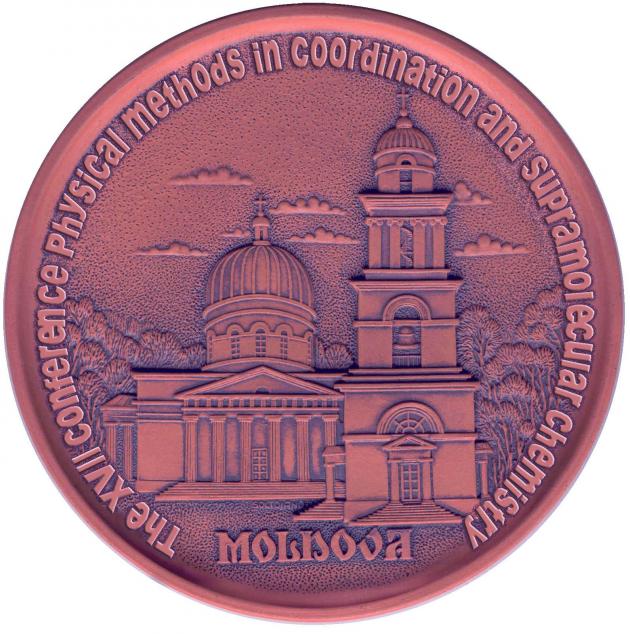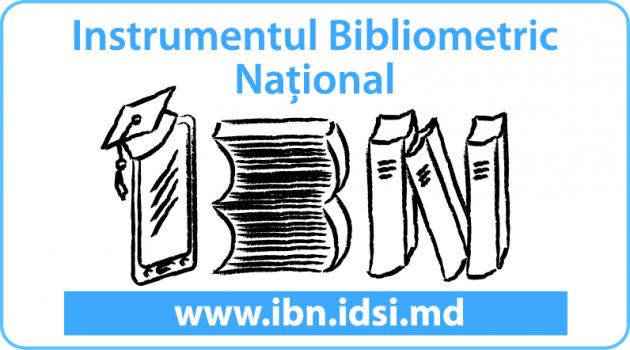
Head of the laboratory - dr. Oleg Bogdevich
Scientific direction of the laboratory is a study of environmental quality and methodology elaboration for the environmental impact assessment of toxic substances to natural waters, soil, sediments, agriculture products and food. Scientific results are implemented in environmental risk assessment for the environment from different pollution sources and elaboration of the recommendation for the remediation of contaminated sites. Laboratory has a capacity (equipment, infrastructure and qualified staff) for the analysis of toxic elements and substances in different environmental objects.
Laboratory is accredited according to ISO 17025 and can perform the following analysis of different environmental objects (natural and waste waters, soils, sediments, plants):
· determination of toxic organic substances POP, PAH, BTEX;
· identification of substances in different objects by gas chromatography with mass detection;
· determination of toxic chemical elements (As, Se, Hg, Pb, Cd, Cu, Zn, Ni, Cr, Al, Mn, Fe);
· analysis of water quality by standard methods.
Laboratory has a modern equipment and qualified staff for the realization of national and international projects for the risk assessment from the toxic substances pollution, recommendation elaboration for the mitigation of negative impact to the environmental and polluted site remediation.
Laboratory has an experience in the realization of international projects by different programs:
· ”Institutional strengthening support to scale up action on short-lived climate pollutants” UN Environment Program and Climate and Clean Air Coalition project/SSFA initiative Supporting National Planning for action on SLCPs (2019 2021).
· EUWI + 4 EaP project “Support in the update of the delineation of Groundwater bodies and the design of a groundwater monitoring network in the Danube-prut and Black Sea River Basin District in Moldova” (2018).
· “Interdisciplinary cooperation network in the Black Sea region for monitoring of migration of toxic substances in environmental compartments of riverine, deltaic and marine areas (MONITOX)” Black See Program, 2018 – 2020.
· Preparatory Phase for the pan European Research Infrastructure DANUBIUS–RI “The International Centre for advanced studies on river - sea systems”, HORIZONT 2020 Call INFRADEV-2, 2017 – 2020.
· Laboratory analysis of groundwater quality for Consultancy Services in GIZ program: “Improved Water Management, Infrastructure and Inter-communal Cooperation in the Criuleni and Dubasari Areas”.
· Laboratory analysis of industrial waste stocks and obsolete chemicals, accumulated historically at industrial enterprises in the project “Inventory, assessment and remediation of anthropogenic sources of pollution in the Lower Danube region of Ukraine, Romania and Moldova” MIS ETC 995, Joint Operational Program Romania-Ukraine-Republic of Moldova, 2015.
· Geotechnical study for Cahul landfill, Cania and Taraclia transfer station sites in frame of project by the modernization of public services financed by GIZ agency.
· Cross-border interdisciplinary cooperation for the prevention of natural disasters and mitigation of environmental pollution in Lower Danube Euroregion” MIS ETC 1676, Joint Operational Program Romania-Ukraine-Republic of Moldova, 2014 – 2015.
· Water body identification and typology, and preliminary classification of water bodies in Selected Pilot River Basin of Prut river in Moldova” for EU project“ Environmental Protection of the International River Basins”(SC № 2011/279-666, Europe Aid/131360/C/SER/Multi), 2013.
· Irrigation Sector Reform Services”, River Basin Management Sub-Activity (RBM), GIS consultant, Identification, Delineation and Classification of Groundwater Bodies, Euroconsult Mott MacDonald in association with: ACDI/VOCA, ACSA, AgLand, Milieu, NGO BIOS, 2012.
· POPs, PAHs, Triazines, and other toxic organic substance determination by GC and GC/MS methods in the project “Moldova contaminated land site prioritization project”, FAO, 2011-2012.
· GC and GC/MS analytical methods in the project Preparation of an Environmental Impact Assessment (EIA) and Environmental Management Plan (EMP) for the POPs Pesticide Elimination, Risk Mitigation and Site Remediation Project in Tajikistan. GEF/World Bank project «POPS Pesticide Elimination, Risk Mitigation and Site Remediation Project in Tajikistan”, 2011.
· Elimination of acute risks from Obsolete Pesticide in Moldova, component part Remediation, MilieuKontakt, the Netherlands, 2007 – 2008;
Equipment and research methods
Atomic Absorption Spectrophotometry (Detection limits 10-10 – 10-12 grams)
Heavy metals – determination by AAnalyst800 Perkin Elmer (USA), made in 2000, equipped by:
- flame technology in air-acetylene;
- Electro thermal atomization with Zeeman corrector;
- Hydride generation system for determination of As, Se, Hg (FIAS400).
Gas Chromatography (detection limits 10-12 – 10-15 grams)
Organic substances - determination and identification by gas chromatograph Agilent6890 equipped by detectors mECD, FID, and mass detector Agilent6890/5973.




